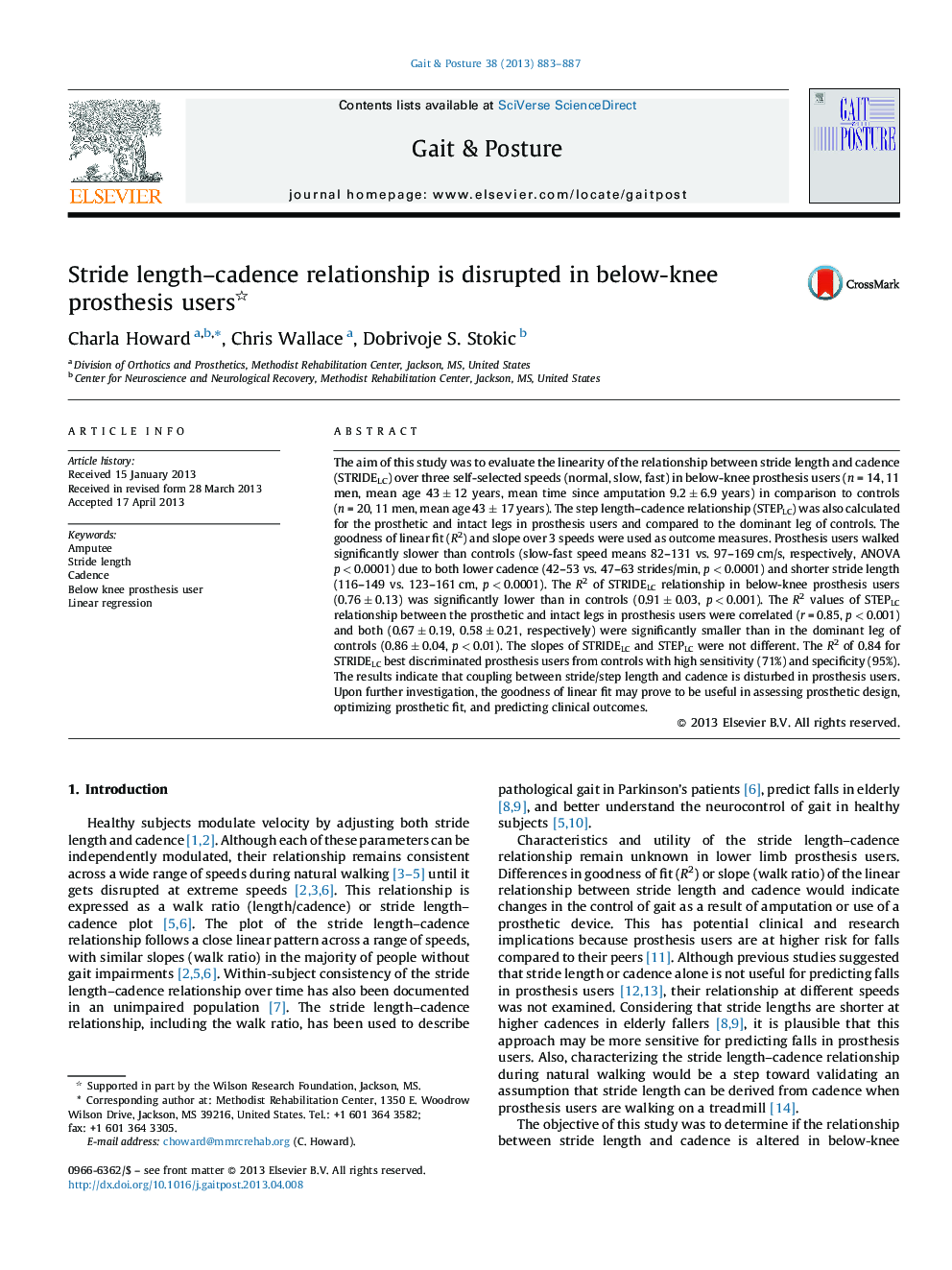| Article ID | Journal | Published Year | Pages | File Type |
|---|---|---|---|---|
| 6206784 | Gait & Posture | 2013 | 5 Pages |
â¢Stride length-cadence linear fit is decreased in below-knee prosthesis users.â¢Step length-cadence linear fit is decreased in both prosthetic and intact legs.â¢Stride length-cadence R2 < 0.84 separates below-knee prosthesis users from controls.
The aim of this study was to evaluate the linearity of the relationship between stride length and cadence (STRIDELC) over three self-selected speeds (normal, slow, fast) in below-knee prosthesis users (n = 14, 11 men, mean age 43 ± 12 years, mean time since amputation 9.2 ± 6.9 years) in comparison to controls (n = 20, 11 men, mean age 43 ± 17 years). The step length-cadence relationship (STEPLC) was also calculated for the prosthetic and intact legs in prosthesis users and compared to the dominant leg of controls. The goodness of linear fit (R2) and slope over 3 speeds were used as outcome measures. Prosthesis users walked significantly slower than controls (slow-fast speed means 82-131 vs. 97-169 cm/s, respectively, ANOVA p < 0.0001) due to both lower cadence (42-53 vs. 47-63 strides/min, p < 0.0001) and shorter stride length (116-149 vs. 123-161 cm, p < 0.0001). The R2 of STRIDELC relationship in below-knee prosthesis users (0.76 ± 0.13) was significantly lower than in controls (0.91 ± 0.03, p < 0.001). The R2 values of STEPLC relationship between the prosthetic and intact legs in prosthesis users were correlated (r = 0.85, p < 0.001) and both (0.67 ± 0.19, 0.58 ± 0.21, respectively) were significantly smaller than in the dominant leg of controls (0.86 ± 0.04, p < 0.01). The slopes of STRIDELC and STEPLC were not different. The R2 of 0.84 for STRIDELC best discriminated prosthesis users from controls with high sensitivity (71%) and specificity (95%). The results indicate that coupling between stride/step length and cadence is disturbed in prosthesis users. Upon further investigation, the goodness of linear fit may prove to be useful in assessing prosthetic design, optimizing prosthetic fit, and predicting clinical outcomes.
